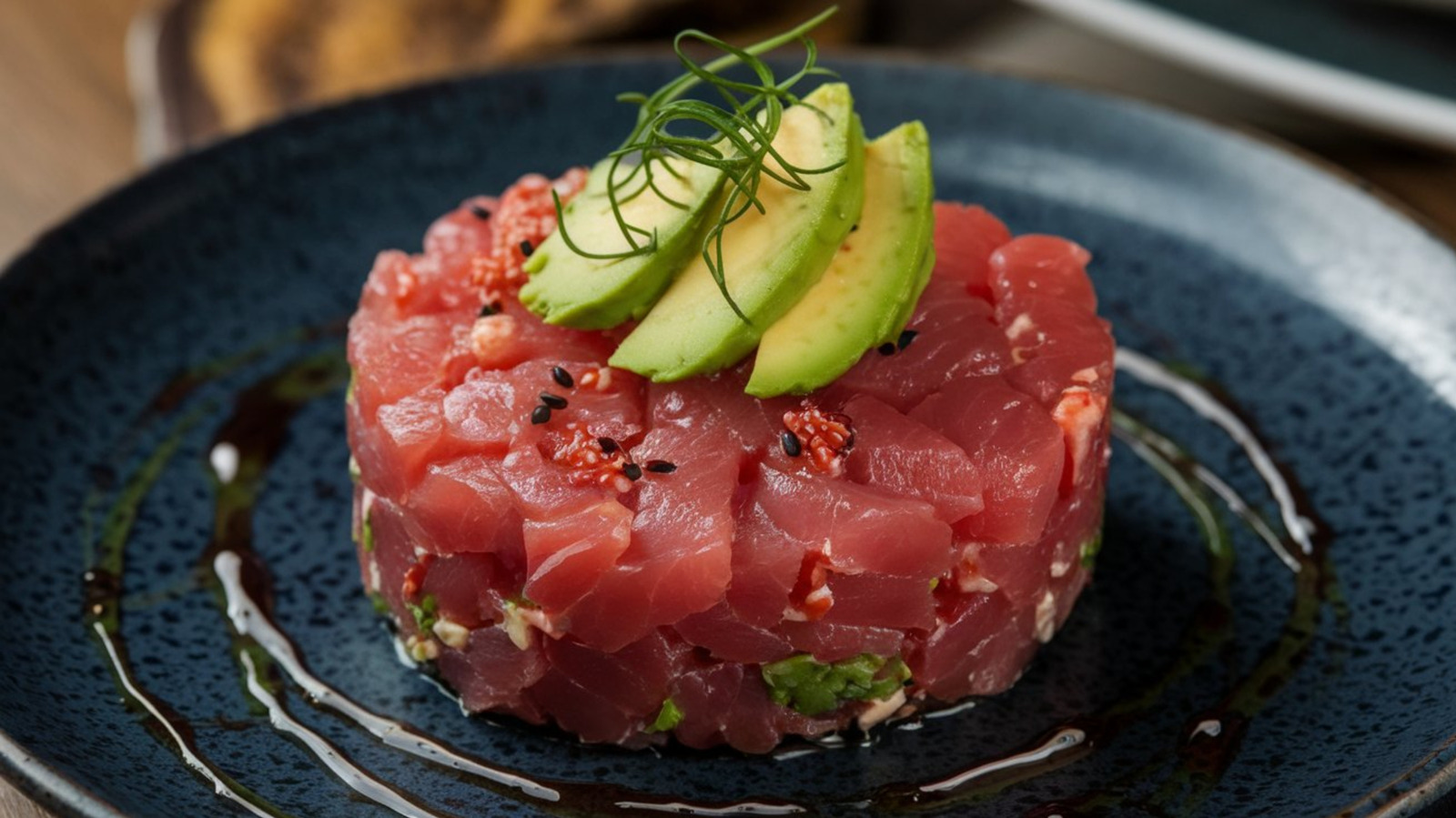Tropical, refreshing, and satiating to boot, tuna tartare is a luxurious appetizer that’s so tasty and opulent, everyone should try it once. But alas, tuna isn’t suitable for everyone. For vegans, vegetarians, and those with seafood sensitivities, tuna tartare is off the table. That is, unless, you make watermelon tartare — the deceptively fishy dupe for the raw tuna dish.
Raw tuna and watermelon have almost nothing in common apart from color, but don’t knock it until you try it. Watermelon tartare doesn’t call for using the fruit in its freshest, sweetest form — it takes a little magic. When watermelon is sliced into bite-sized cubes and oven-roasted, it loses much of its water content and takes on a tender, dense, and surprisingly meaty texture that’s a complete 180 from the crunchy, airy, and granulated consistency characteristic of the fresh fruit. Its familiar flavor dissipates in the oven, exchanging its candy-sweet essence for a smoky, caramelized taste that’s more nuanced than its typically summery and sugary state.
Once it’s done roasting, marinate the new-and-improved watermelon in bold flavors featuring ingredients inspired by the ocean, like furikake, soy sauce, and sea salt. After the roasted watermelon has soaked up the flavors of its marinade, it’s ready for plating on a bed of sushi rice with your favorite veggie fixings and a splash of sauce or dollop of dressing. Succulent like the real stuff with a color as vibrant as bluefin tuna and a flavor that’s deeper than the ocean itself, this tuna tartare dupe is almost too good to be true.
Tips for making watermelon tuna tartare
Making watermelon tartare is no more challenging than making its fishy counterpart. However accessible it may be, keeping a few tips in mind will help you achieve the perfect faux tuna tartare.
For starters, always select the highest-quality watermelon you can find. Since you’re not enjoying it for its blast of juicy goodness, it doesn’t need to be perfectly ripe. Opt for a seedless variety to maintain a smooth tuna-like texture. Before cutting into the watermelon, it’s important to wash and pat dry the fruit, because the rind can harbor contaminants like dirt or bacteria. If you cut into the watermelon without cleaning it first, those contaminants can transfer to the flesh, affecting the taste, texture, and safety of the fruit and your final dish. To cut watermelon into cubes, slice it in half, remove the rind, and dice. Cutting the cubes just slightly larger than the average piece of tuna tartare allows for shrinkage during cooking. A good rule of thumb for temperature and timing is 400 degrees Fahrenheit for just shy of an hour, stirring the watermelon halfway through.
Assembling the right marinade is just as important as cooking the watermelon to transform its texture. Experiment with flavors to figure out what works best for you, but a solid lineup of ingredients might include miso paste, soy sauce, tahini, sesame oil, furikake, kelp seasoning, and sea salt. Marinate the baked fruit in the fridge for at least a day before assembling the dish and serving. Plate your watermelon tartare with rice and drizzle it with lime and plant-based sriracha mayo for a satisfying meal.





